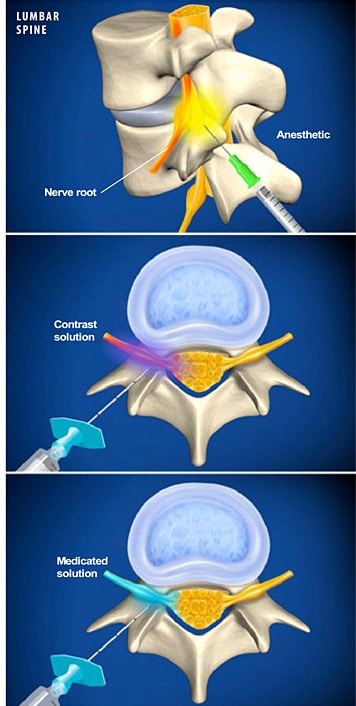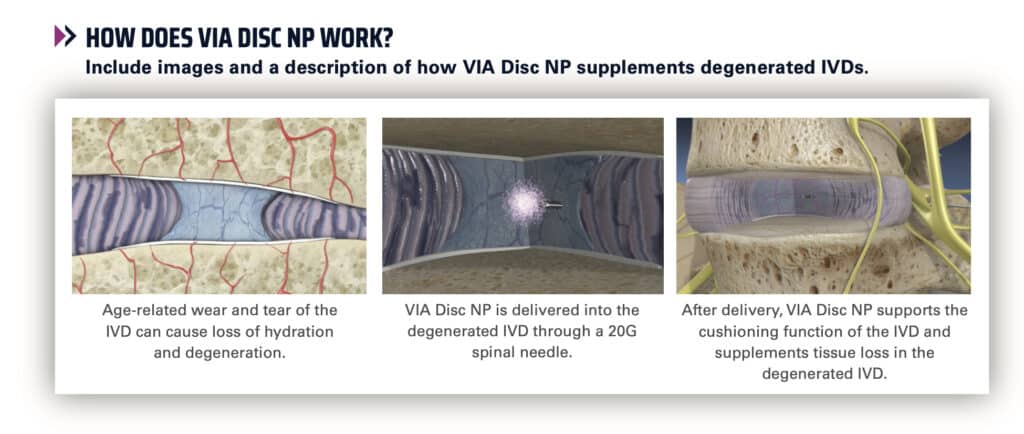Lumbar Transforaminal Epidural Steroid Injection
A Lumbar Transforaminal Epidural Steroid Injection is an outpatient Pain Management procedure designed to treat lumbar (low back) and leg pain. Your doctor injects anti-inflammatory medicine into your epidural space to reduce the swelling. A local anesthetic numbs the root nerves, easing your pain.
This technique puts the soothing medication near the source of the inflammation. Because your Pain Management doctor performs this injection procedure from the side where the nerve exits your spine, it is called a transforaminal injection.
 OVERVIEW
OVERVIEW
This procedure can relieve low back and radiating leg pain. The steroid medication can reduce the swelling and inflammation caused by spinal conditions such as spinal stenosis, radiculopathy, sciatica and herniated disc. The procedure is described below. Consult your doctor about your risks and what to expect after the procedure.
1. LOCATING THE VERTEBRA AND ROOT NERVE
For this procedure, you must lie face down with a cushion under your stomach to provide comfort and flex your back. This position also opens your spine, which allows your doctor easier access to the epidural space. The physician uses a fluoroscope to locate the appropriate lumbar vertebra and root nerve. Then he or she applies a local anesthetic to numb the skin.
2. ANESTHETIZING THE TISSUE
Using a thin needle, the doctor anesthetizes all the tissue down to the surface of the vertebral transverse process. See the top illustration.
3. INSERTING THE NEEDLE
The physician slides a thin bent needle with a slightly curved point through the anesthetized track. With the aid of the fluoroscope, he or she carefully guides the needle into the foraminal space or spinal opening, near the targeted root nerve.
4. INJECTING THE CONTRAST DYE
As shown in the middle illustration, your doctor injects a contrast solution into the space. Then he or she uses the fluoroscope to see the painful areas more clearly, confirming the correct location of the needle tip.
5. INJECTING THE STEROID MEDICATION
The physician injects a steroid-anesthetics mix into the foraminal epidural space, bathing the painful root nerve with soothing medication. Refer to the bottom illustration.
6. RECOVERING FROM THE PROCEDURE
Once the needle is removed, your physician applies a small bandage to cover the tiny needle surface wound. In some cases, he may need to repeat the procedure as many as three times to provide you with the full benefit of the medication. Many patients, however, get significant relief from only one or two injections.
MORE INFORMATION
For more information about nerve blocks and epidurals, refer to SSI’s Block Suite.
Find out more about SSI’s Pain Management procedures.
Conservative care & rehabilitation (non-surgical procedures)

